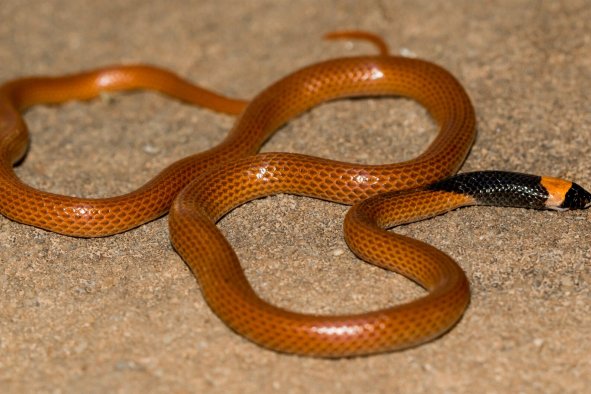A prehistoric saber-toothed cat once roamed what is now the Gulf Coast of Texas, a "treasure" of a fossil has revealed.
The fossil belongs to an individual from the extinct genus (or group of species) called Homotherium, a study published in The Anatomical Record reported. The members of this group were large saber-toothed cats that inhabited the Americas, Eurasia and Africa between roughly 4 million and 12,000 years ago.
These cats were large and robust, measuring around the same size as a jaguar. They had an elongated face, lanky front legs, a sloping back and a bobtail. Their characteristic "saber"-like canine teeth were serrated and covered by large gum flaps.
Homotherium remains have been uncovered in other parts of Texas. But the fossil that was analyzed in the latest study is thought to have originated from submerged deposits of the continental shelf below the Gulf of Mexico. This represents the first occurrence of this group from the continental shelf, according to the study.
A continental shelf is an area of seabed around a large land mass, like North America, and is characterized by relatively shallow seas, compared with the open ocean. In the northern Gulf of Mexico, the continental shelf extends approximately 60 to 120 miles offshore, according to the National Oceanic and Atmospheric Administration.
The Gulf's continental shelf is now submerged, but it was once above sea level during cold, glacial periods of the Late Pleistocene, which lasted between roughly 129,000 and 12,000 years ago. During these glacial periods, sea levels were significantly lower than they are today, with large amounts of water locked up in vast continental ice sheets or mountain glaciers.
The Homotherium fossil analyzed in the new study was originally found more than 60 years ago, having been washed up on McFaddin Beach, south of Beaumont, Texas.
At first glance, the roughly 2-inch-long specimen looks unremarkable, resembling a lumpy, rounded rock with a couple of exposed teeth that have been heavily eroded after thousands of years of being submerged in the Gulf.
"You can't even tell what it is, let alone which animal it came from," said John Moretti, a doctoral student at the Jackson School of Geosciences at the University of Texas at Austin, in a press release.
"It's like a geode. It's ugly on the outside, and the treasure is all inside," said Moretti, who led the study.
When Moretti and his colleagues conducted X-ray scans of the fossil, they spotted something that was not previously visible—a hidden canine tooth that had not yet erupted from the jawbone. This tooth, which is in far better condition than the exposed ones, enabled the researchers to identify the fossil as belonging to a species of Homotherium.
The individual cat was not fully grown when it died, and the hidden tooth had not yet emerged from the jaw, protecting it from the elements.
"Had that saber tooth been all the way erupted and fully in its adult form, and not some awkward teenage in-between stage, it would have just snapped right off," Moretti said. "It wouldn't have been there, and we wouldn't have that to use as evidence."
The finding expands the geographic footprint of Homotherium in Texas, indicating that it would have roamed the formerly exposed continental shelf, which once connected Texas and Florida directly.
In light of the discovery and other Pleistocene fossils found on McFaddin Beach, the study's authors hypothesize that the now submerged stretch of land between Texas and Florida once served as a "corridor" that facilitated the dispersal of animals in this period.
Do you have an animal or nature story to share with Newsweek? Do you have a question about paleontology? Let us know via science@newsweek.com.
Disclaimer: The copyright of this article belongs to the original author. Reposting this article is solely for the purpose of information dissemination and does not constitute any investment advice. If there is any infringement, please contact us immediately. We will make corrections or deletions as necessary. Thank you.



